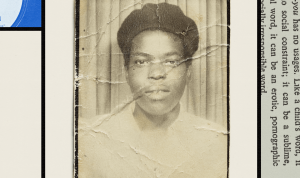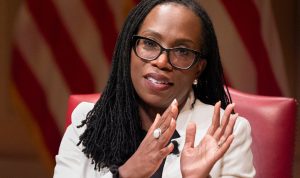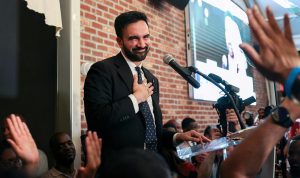Panics about the supposed threat of socialism or communism are hardly new to American history, so the reaction in some quarters to thepresumed victoryof Zohran Mamdani, a self-described democratic socialist, in last week’s New York mayoral primary wasn’t surprising.“It’s officially hot commie summer,” the hedge-fund billionaire Dan Loebwroteon X. A bit more shocking, perhaps, was the response of the Harvard economist Larry Summers, a former Treasury Secretary during the Clinton Administration, whoaccusedMamdani of advocating “Trotskyite economic policies,” which was presumably a reference to his calls for a rent freeze, free bus rides, government-run grocery stores, and higher taxes on millionaires and corporations. (Summers also said Mamdani had shown a great ability to learn during the campaign and expressed the hope that he would “provide much needed reassurance” to believers in the market economy.)
To be sure, these reactions to what might be called “Zohranomics” didn’t exactly stun Mamdani’s supporters, many of whom take criticisms from financiers and centrist Democrats as confirmation they are on the right track. Summers “never disappoints, does he?” Isabella M. Weber, a professor of economics at the University of Massachusetts, Amherst, who signed apublic letterendorsing Mamdani’s campaign proposals, told me during a lengthy conversation last week. Weber rose to prominence during theCOVID-19 pandemic, when she called for government price controls and published detailed research about how big companies were taking advantage of the global emergency to raise their prices and profit margins. Responding to Summers’s comments, she said that describing Mamdani’s program as Trotskyite was “absurd” and didn’t tell us anything “about what Mamdani’s agenda is trying to get at.”
In the open letter, whichThe Nationpublished a few days before the primary, more than two dozen progressive economists from the United States and other countries described Mamdani’s policy platform as “a bold yet practical blueprint to tackle some of New York City’s most urgent challenges—above all, the cost of living.” Weber told me that she felt Mamdani “did very well in presenting himself as someone who stands up for the affordability of life and focusses on what I have been calling ‘essentials’—the stuff that people can’t do without: housing, food, transportation, and child care. If you can’t afford that stuff, you are really pushed to the margins of society.”
Weber contrasted Mamdani’s proposals with the equivocations ofJoe Biden’s Administration during the nationwide cost-of-living crisis thatDonald Trumpand other Republicans successfully exploited in last year’s election. She recounted how Biden, in his 2024 State of the Union speech, denounced corporations for capitalizing on a period of crisis by increasing their prices or reducing the size of their offerings, but then didn’t do much about it. After Kamala Harris replaced Biden on the Democratic ticket, she proposed a federal ban on price gouging by food suppliers and grocery stores. But she subsequently rowed back on the issue, Weber recalled, “based on pressure from similar quarters that have been criticizing Mamdani’s campaign.”
The critique of Harris’s proposal was that price controls don’t work, and the same charge is being hurled at Mamdani’s call for a rent freeze on roughly a million rent-stabilized apartments. (The freeze wouldn’t apply to the city’s million or so market-rate apartments.) In a controversialcolumnthat favored Andrew Cuomo over Mamdani but took aim at both, the New YorkTimes’ editorial board said that a rent freeze “could restrict housing supply and make it harder for younger New Yorkers and new arrivals to afford housing.” The argument is that, if landlords and developers see a rent freeze, they would be deterred from investing in new affordable housing. When I put this point to Weber, she said that it was important to realize that Mamdani’s call for a rent freeze is accompanied by a pledge to build an additional two hundred thousand rent-stabilized units over the next ten years; his campaign plans to accomplish this by expanding public investments, changing zoning laws, and fast-tracking planning approvals. “If you only do a rent freeze without insuring that you also build, I don’t think that’s a great idea,” Weber said. “Given the severeness of the affordability crisis in New York City, the combination of a rent freeze and an aggressive build-out of affordable housing is a good idea.”
Creating more affordable housing is hardly a radical new mayoral goal, of course. In 2014, at the start of his eight-year tenure, Bill de Blasio also unveiled a plan to build or preserve two hundred thousand affordable apartments, and, in 2021, his administration announced that it had achieved this goal. Arguably, the most successful expansion of the city’s affordable-housing stock came with the construction of public-housing projects, which began during the Great Depression under Mayor Fiorello La Guardia, who established the New York City Housing Authority (NYCHA), and continued in the postwar decades. Subsequently, federal funding dried up, and public housing came to be associated with crime and other problems. In recent decades, New York’s mayors have built affordable housing primarily through public-private partnerships, in which for-profit and not-for-profit developers receive tax breaks and other forms of support for putting up buildings that are privately managed. Mamdani’swebsitesays he will “recommit” to public housing, doubling the city’s investment in “major renovations of NYCHA housing” and usingNYCHA-owned land, such as parking lots, as sites for more affordable housing—a proposal that de Blasio also championed.
That sounds sensible, and overdue, but the housing shortage facing the city is formidable: some recent studies say it needs to build as many as half a million new homes. Mamdani has put less emphasis on encouraging market-rate development. He has given a few nods to the“abundance” wingof the Democratic Party, such as pledging to eliminate parking minimums and encourage development around subway stations and other transport hubs. But the primary goal of his plan is to “unleash the public sector to build housing for the many.”
Another objective is to provide the city’s residents with cheap and healthy food. The Mamdani campaign says that its new grocery stores would operate in city-owned buildings in low-income areas that currently lack adequate options—so-called food deserts. It went on, “Without having to pay rent or property taxes, they will reduce overhead and pass on savings to shoppers.” Before moving to Massachusetts, Weber once lived in the Sunset Park neighborhood of Brooklyn, where she sometimes found it difficult to shop for healthy foods. “The price dimension”—of Mamdani’s proposal—“is important, but the other is the accessibility of nutritious food,” she said.
It’s important to note, as some media accounts haven’t, that Mamdani is proposing a pilot scheme of just five new stores—one in each borough. In a metropolis with more than fifteen thousand privately-owned supermarkets and grocery outlets, this seems like small beer. Nonetheless, Weber said that the experiment could be valuable. If it succeeded, it could be expanded, she noted, and ultimately it could encourage more competitive pricing in private stores: “If you have an alternative that is reliably cheap and doesn’t take advantage of opportunities to raise prices when they occur, that can change the pricing dynamic for whole sectors. That is potentially an important advantage that comes from having a public option.”
In many people’s minds, the term “public option” is associated with health care. But public transportation is a public option, too, and, as Weber pointed out, the proposal to make bus rides free fits in with Mamdani’s emphasis on basic needs. “Affordable transportation options are essential for your basic material well-being, to get to a job, make money, and earn a living,” she said. Some progressive thinkers and groups have extended the public option concept to other areas, including communications, financial services, and food retailing. In a recent article that cited Mamdani’s proposal on grocery stores, Becky Chao, the director of policy and research at the Economic Security Project,wrote, “Public options show what’s possible when governments respond to local communities’ needs and build real alternatives for their constituents, when we grapple with the imbalance of power in our economy, and focus on marketshaping solutions that constrain corporate power while building power for all Americans.” Of course, public options will only succeed if they deliver what they promise. For example, there’s no guarantee that city-run grocery stores would be able to provide cheaper and more nutritious foods. “That’s why you need a pilot,” Weber acknowledged. “To see if you can pull it off.”
Another of Mamdani’s proposals is more familiar to mainstream Democratic policymakers, and likely more consequential all around: universal child care. During the 2020 election campaign, Biden called for federally financed child care for all children aged three and four. After he was elected, he included a version of this proposal in his Build Back Better plan, which failed to make it through Congress after Joe Manchin and Kyrsten Sinema opposed it. Mamdani, according to his website, is promising to provide “free childcare for every New Yorker aged 6 weeks to 5 years, ensuring high quality programming forallfamilies.” This plan builds on de Blasio’s establishment of universal pre-K, which was the signature achievement of his mayoralty. Weber pointed to studies showing that child-care programs—which already exist in places like France, Sweden, and her native Germany—generate positive outcomes for parents and children alike. She said that the city at large would also benefit from them, because fewer families would be forced to leave when they have children. “I can think of three off the top of my head that moved out because it was completely impossible,” she said. “It’s really important for New York as a place.”
That’s surely true, but how realistic are Mamdani’s proposals? One obvious issue is cost. Earlier this year, the group New Yorkers United for Child Care released a plan for statewide universal coverage that it said would cost $12.7 billion a year. The Mamdani campaign hasn’t said how much its plan for the city would cost, but if it was half that figure it would expand the city budget by about five per cent. To help pay for his spending proposals, Mamdani says, he would raise the city income-tax rate by two percentage points for individuals earning more than a million dollars a year, and by increasing the state corporate tax rate to 11.5 per cent. Cuomo, pushing back on Mamdani’s proposals, claimed that the tax hikes would prompt many rich people and businesses to flee, thereby undermining the city’s tax base. At least one recent study of millionaire migration patterns suggests that the threat of tax flight has been exaggerated, but it’s certainly true that Mamdani, in order to get his tax proposals enacted, would need the support of Governor Kathy Hochul and the state legislature. “They wouldn’t only have to support it—they’d have to initiate it,” a longtime state official and observer of Albany politics, told me. “And it’s great to say you are going to introduce free bus rides in New York City, but you don’t run the M.T.A., which runs the buses. The governor appoints most of the M.T.A.’s board.”
Financial experts say that Mamdani would also have to get state approval for the extra seventy billion dollars in municipal-bond issues that he is proposing in order to pay for his affordable-housing program. These realities of New York politics partly reflect the state’s constitution, originally adopted in 1777, which devolved some but by no means all powers of self-government to the city. The next mayor, like so many of his predecessors, will have to engage in awkward negotiations with politicians in Albany. This isn’t necessarily a hopeless position. The official noted that de Blasio, after being elected in 2013, eventually received a good deal of state funding for his electoral platform, which included universal pre-K. And this de Blasio success came despite the fact that he had an awkward relationship with Cuomo, who was then governor. “It’s normal Albany politics—the haggling, the back-and-forth,” the observer said, adding that Mamdani “has a good chance to get a good chunk of his agenda through, but he’s unlikely to get everything.”
That’s only one assessment, of course. Kathryn Wylde, the chief executive of the Partnership for New York City, a business leadership group that represents about three hundred companies in the city, gave me another one. Since the primary election, Wylde said, she has been spending a lot of time reassuring senior executives that Mamdani wouldn’t have the authority to push through his proposals, particularly the tax ones, “so they don’t freak out and move.” Wylde went on, “We have every confidence that the Governor will make clear to him that his tax agenda is a non-starter.”
Weber questioned the notion that wealthy people could leave New York en masse. She said that having an apartment in a desirable part of Manhattan is a status symbol that they value highly, and she added that folks on more modest incomes are more sensitive to rising costs. “If rent costs become too high, and transportation and food, they do end up leaving. For the super-rich, the calculus is completely different.”
She did grant that Mamdani will face some major obstacles if he gets elected, but that hasn’t sapped her enthusiasm for his candidacy, which she regards as a model not just for New York mayoral hopefuls but for any politician seeking to counter the rise of Trump and other right-wing populists.
At the end of our conversation, I asked Weber how she would describe Zohranomics. As municipal socialism, perhaps? Or municipal Rooseveltism? “I’m not sure we need to search for ‘isms’ here,” she replied. “If anything, it is a very effective form of antifascist economic policy. We are at a moment where the crisis of economic security, of affordability, that comes with basic questions of dignity and identity are being used by the far right in ways that fuel the return of fascist tendencies. I think that having an agenda that is laser-focussed on the needs of ordinary people is what we need, and that is basically where the Democrats fell flat last year. At the federal level and the global level, we are dealing with the consequences of that lack of vision right now.” ♦










